‘To Let’ is a film that deserves to be celebrated.
When I say that, please do remember, I am a Bengali, brought up in Assam and Kolkata, and based out of Delhi for almost two decades now; and yes, I do not understand a single word of Tamil. Yet, I cherished every single moment of this debut-film by Writer-Cinematographer-Director Chezhiyan.
That’s because you don’t need to be a Tamilian or even an Indian to feel one with ‘To Let’. Somehow, and I am still quite intrigued how, its creative team managed to make a universal statement out of a very personal and familiar problem – how to find a rental accommodation after being issued an eviction notice by the landlord.

Is it because it’s a middle-class ‘situation’ that’s universally relatable? Or maybe because the characters are so realistically portrayed that you find yourself caught up in their lives – till you start feeling one with their sticky situation!!
Or is it because the film-crew here has successfully managed to swim against the prevalent tide – where the film never dictates your emotions by telling you how to emote and react to a particular scene? ‘To Let’ just continues to happen, and you get involved with the flow, even if you don’t intend to. The film sucks you in.
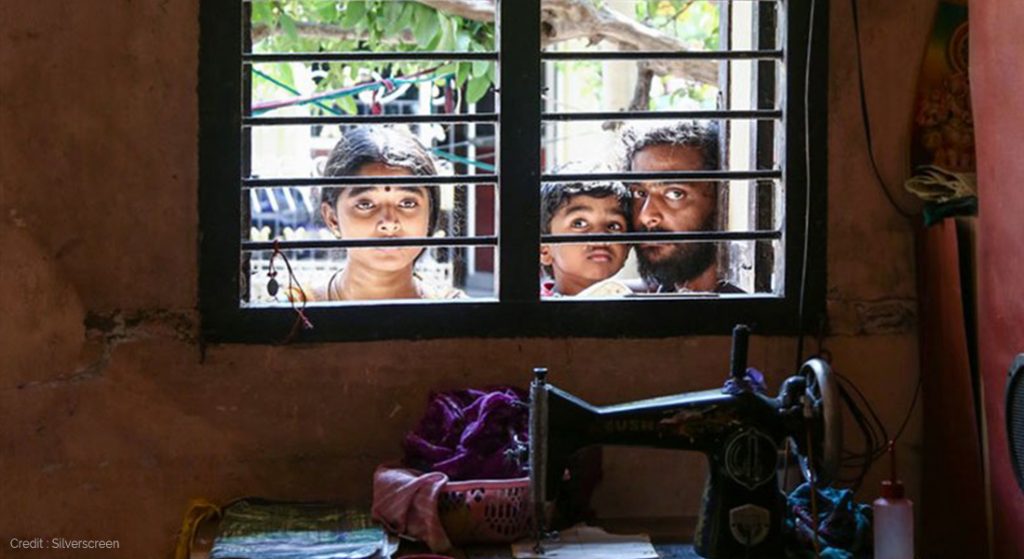
Considering most of my readers might not have seen the film, let me bring you the story in a nutshell. Just the premise, I won’t give you the details, since I do not want to spoil your movie-viewing experience.
The story pivots around the experiences of a family of three – young husband, wife and their kindergarten child. The father is an assistant-director and a writer in the Tamil Film Industry, the mother a house-wife, and their marriage being a love marriage – they are isolated from any extended family support.
Here’s a lower-middle class household that’s evidently happy with whatever little joys they have in life. In the midst of all that, they get a rude shock when their land-lady gives them an eviction notice of one month – presumably because she wants to rent the house to IT professionals, who would pay more. The film is about their house-hunting along the back-lanes of the film-city area of Chennai – and the numerous frustrations and discriminations they face in the process.
The premise looks too ‘simple’ – isn’t it?
I can almost see a whole lot of most erudite and on-the-ball producers nodding ‘negative’ at the script, passing out remarks like ‘I don’t think this has enough meat to become a feature film!!’
But that’s the beauty of ‘To Let’!! It never feels conventional.
When there’s a power cut, the entire screen goes dark; when people talk, there’s no attempt to do the usual over-the-shoulder cross-cutting; shots are lengthy, but never seems so; there’s no background music to modulate your emotions, just the ambience, overpowered by the sound of a rickety fan mixing seamlessly with songs and static on the radio and a relentless pulse-grinder turning in the background; it’s almost like you are in there, with them. And when you go out, every neighbourhood has its own distinct soundscape.
Soon enough, you become a member of that family, and their problem becomes your problem.
All three key actors are newcomers, but what performances!! Just about 25 days of shoot – but what a film!!! Naah, you should watch it; enough of spoilers.
For me, the film felt personal; was it the same for Chezhiyan, the director? All I know that it was an independent film, and his wife was the producer.
I asked him about the genesis of the idea.
Chezhiyan is an award winning cinematographer – with critical acclaim for many Tamil language feature-films. He started his career as as an apprentice to P. C. Sreeram, and went on to establish himself as a full-fledged cinematographer in ‘Kallori’ (2007). His faithful depiction of the dust and grime that provides the context for that film earned him quite a few accolades.
Famed Director Bala’s period-drama ‘Paradesi’ (2013) is another of his career-defining achievements; it went on to win many awards, including the Best Cinematography Award at the 2013 BFI London Film Festival Awards.
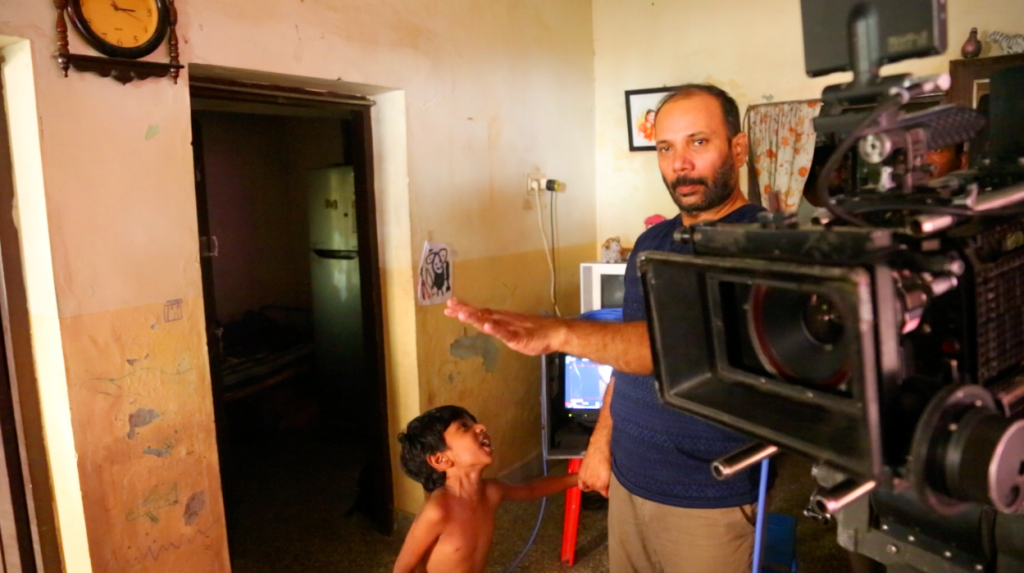
This is just to say, when a cinematographer of his stature decides to keep his camera mostly motionless, capturing block shots inside the living room of the ‘To Let’ family – it has to be for a specific purpose. In stark contrast, when the characters are outside, especially during the house-hunting sequences – there’s a lot of hand-held camera movement and follow-shots.
So, was there a plan behind it?
Let me tell you, all these questions that I am coming up now with are majorly afterthoughts. The first-time I saw the saw the film (all thanks to Tapas Nayak, the sound designer ) I had absolutely no idea what I am getting into. I just wanted to see it since I had to frame questions for his interview on Sound Design.
But once I started watching it, I couldn’t stop and stayed glued right till the end of it.
And then, I asked myself, what the heck just happened?
I saw the film again, title to title, that night itself, to find out what happened; and again, the next day. Frankly, I was befuddled.
There’s something unusual about the film, which is not immediately apparent. It’s neo-realistic film-theory in practice, and can probably be called an art-house film in its treatment – but that’s never on-your-face. Thematically, it talks about a world that wouldn’t accept you as you are – they always want you to be someone else. In this case, you need to be from a particular religion, caste, and do a certain kind of work to be accepted as a tenant in a household.
But that’s not the only reason why the film appealed to me.
‘To Let’ keeps returning to me since it’s a film about moments that stay with you. It makes you meet your own memories. Like those detail scrawls of monthly expenses that underline the middle class paradox of never having enough money; the grateful smile of the wife for just a beach-outing; the scribbles of the child on the wall and his later attempts to erase them off; the sketch of the house where he writes ‘To Let’ with crayons; the vagrant sparrow that gets killed in its attempt to find shelter; the son being unable to explain the vocation of the father; the moments of family happiness strewn in where the son plays ‘house-hunt’ that squeezes some ‘fun’ out of their dreary real-life predicament; the worn-out moped and the furious kicks to get it moving; the conjugal fights and the reconciliation – everything is so familiar, that is doesn’t feel like a movie at all; it’s life, with all its nuances, portrayed with seamless craftsmanship.

Yes, it’s craftsmanship. None of the above is abrupt – it’s all sewn together.
The film has long Mis-en-scenes, like Chezhiyan mentioned, but they never seem to slow the pace of the film; there’s no background score, but that never creates a problem for my dominantly Indian ear. The film often uses off-screen space to expand the scope of the frame – but that never feels un-natural.
That’s craftsmanship; such things do not happen by chance.
I also heard, besides the festival circuit, the film did quite well at the box-office. How come? How did an audience used to mediocrity accept this? If you have seen the film, you will know what I mean. It’s a puzzle.
‘To Let’ has a kind of spontaneity that probably can’t be scripted, I thought.
Well, it seems I was both wrong and right on that account.
True that. We often tend to forget the element of teamwork that adds value and character to every film we make. The mainstream media interviews the director and the stars of the film – and film-critics don’t even do that, mostly.
But yes, being just another wannabe writer, I can always speak to Sreekar Prasad and Tapas Nayak about their respective roles in the making of ‘To Let’ – which I did.
After all, they came together as a team to create a critically and commercially successful film without the usual (and on-demand) song, dance and fight sequences, without either art-house melodrama or extrapolated comic-scenes – and even without a conventional background music score.
If that isn’t awe-inspiring, I don’t know what is?
Sreekar Prasad and Tapas Nayak spoke to me at length about ‘To Let’. But you have to give me a day’s time to bring you what they said.
Sorry, but it’s New Year for me too.
That apart, the fact that the film did so well without music is a huge approach-shift, and a remarkable achievement of cinematography, editing and sound design coming together; that deserves a complete and separate blog post.
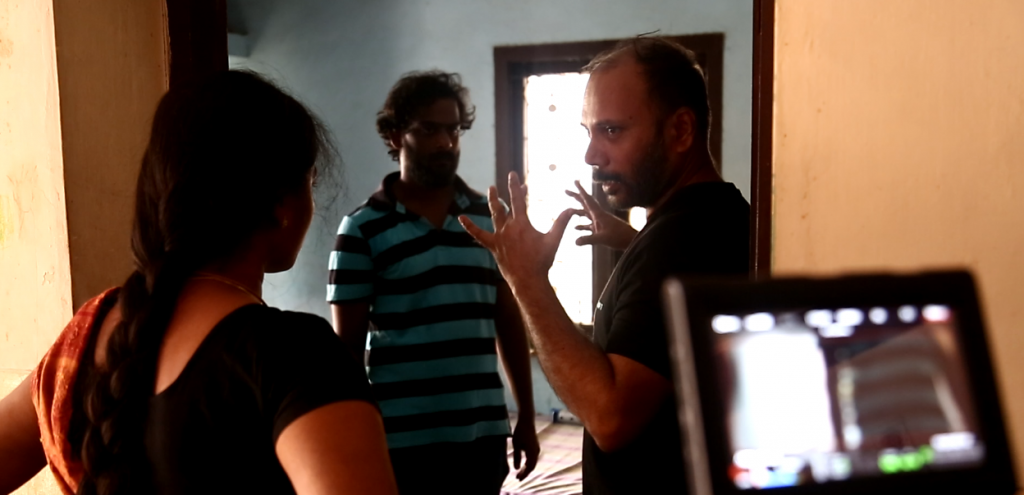
But yes, before I take leave of you, I have to tell you about another key detail of ‘To Let’ that caught my attention, and made the film all the more personal for me.
The protagonist, Illango, is an assistant director in the film-industry, who also makes his living doing odd jobs like writing spots for silly advertisements.
He comes across as one of those ‘parallel’ film-makers, with IFFI bags hanging in his living room; when he packs his boxes, you can spot books about Akira Kurosawa and dvds of Satyajit Ray and Mrinal Sen.
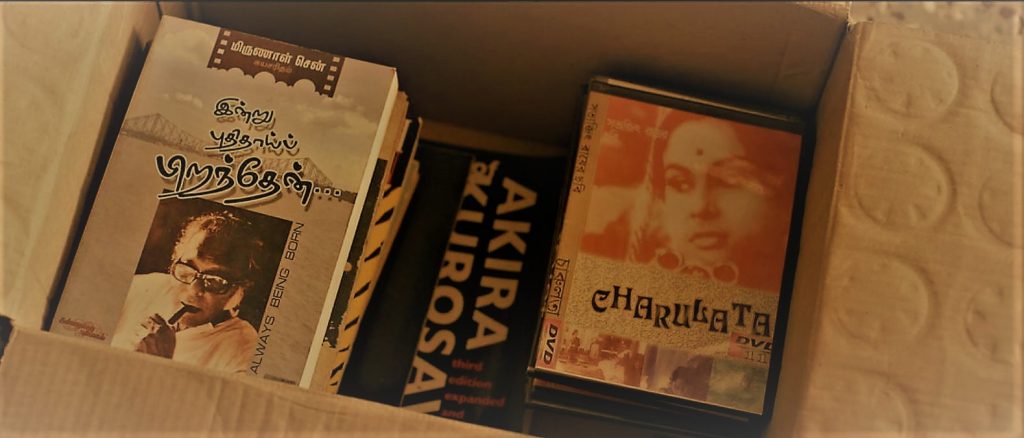
Now my brother Illango has a feature film script ready. During the course of the film, he went to sell it off to a producer, to face the impending crisis of rental ‘advance’; there, he is told point blank that he might get money, but he will not get credit for the script. With ardent advice from his wife, he decides to fight it out and not sell it off.
That sounded familiar to me.
Especially the not getting credit part; I wonder why (chuckle)!!!
More than the obvious query whether the family got a place to stay, or if the son got a good school, I wanted to know if Illango did sell-out on his script – and I asked Chezhiyan the same question.
That’s happy New Years Eve for me, for sure; If Illango can, others can too.
There will be time.
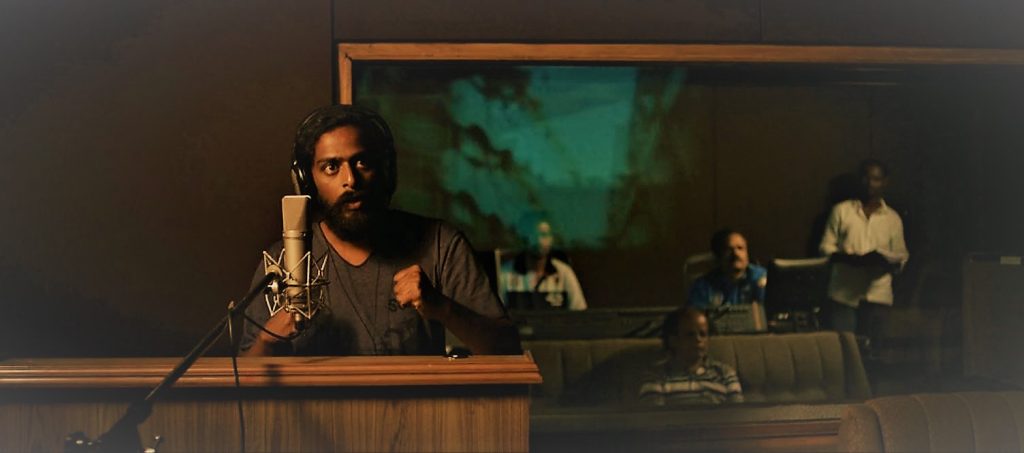

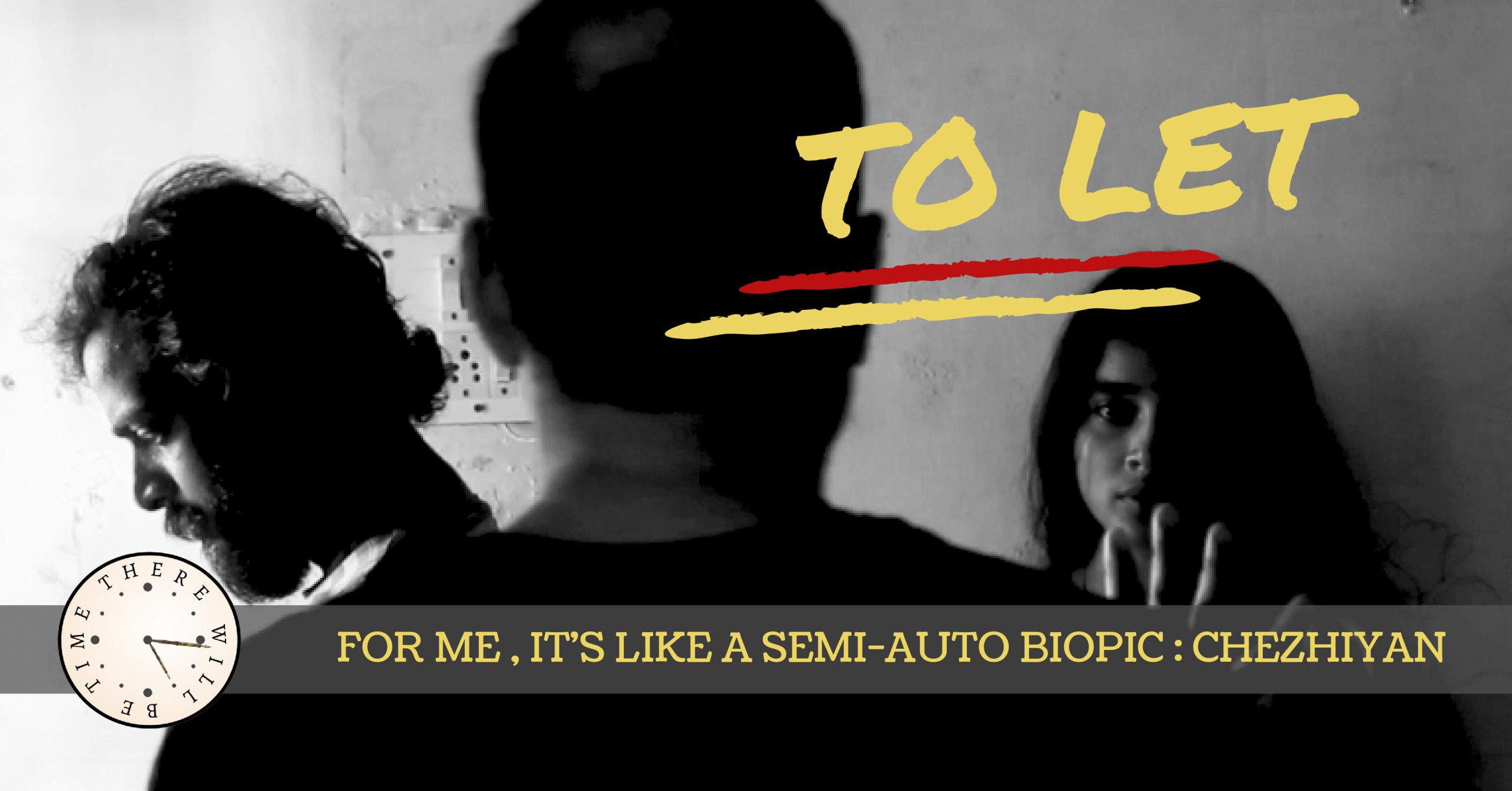
Just great… Wish all the Illangos all the best…
Wonderful
Very nice. Will surely see the film